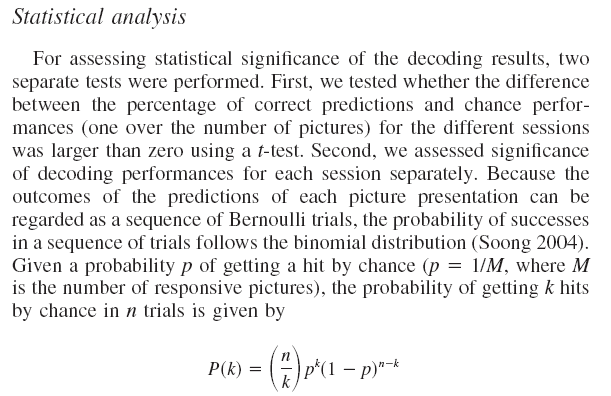Endnote 5 to Mind-Matter Argument 2
I am truly thankful for my self-avowed materialist friend of many years for taking the time and trouble to respond to many of my arguments in this Mind and Matter section. In one email, clearly intending scientific evidence such as the Nolan Sisters study, she makes what I am calling the Not Hard Science argument. It is a line of thought I know well from having myself felt it in my bones for many years. I quote an entire paragraph from her mail. My emphasis.
But when we look at the spiritualist vs materialist perspective that common paradigm is missing. I am content with the explanatory power of the current scientific paradigm, but you are moving into what you consider the next paradigm shift. And yet these paradigm shifters still want to make use of the old scientific paradigm to persuade us recalcitrant secular humanist types that we need to take spiritual entities seriously. So they set up what look like scientific experiments, take notes, analyze data, etc. But I notice that the chief scientific tool they use is probability theory. That seems to have led Sheldrake's lame opponent to complain that the believers in telepathy aren t interested in "how this works." Instead they rely on probability to show that we aren't just dealing with chance. But most of science, especially the biological sciences, involve experimentation that doesn't rely on probability to show how something (like the Jennifer neuron) works.
The Jennifer neuron refers to the use of that expression in a book and a public appearance by Sebastian Seung, an MIT neuroscientist whose work, strongly supporting the materialist understanding of mind and brain, I called to my friend’s attention. I urge the reader to view this two-minute video (done by a molecular biologist) to get a quick overview of the Jen neuron, or to read this NPR report.
The reader will note that the two references definitely support my friend’s view of how biological science works in the case of the Jen neuron. You open up the brain, find a neuron, wire it up to your recording machine, show the patient a photo of Jen, and the neuron fires. But it only does that for her, not for other stars or for others, period. This is hard science. No need to rely on probability.
Some readers may also want to read the scientific paper referred to by Seung and all the rest. It is readily available on the internet for free, here. In case that link is broken, the complete bibliographical info is this: R. Quian Quiroga, L. Reddy, C. Koch and I. Fried J Neurophysiol 98:1997-2007, 2007. I myself would never have bothered with finding and reading this study. That is because its veracity has no bearing on my thinking about mind and body. I accept it as true and file it away with many others of similar import that I have read about and also not actually bothered to go and read for myself. (>>>.)
In this case, however, I decided to go look at the paper just because my gut instinct was that, if it were like most scientific studies today, particularly in the biological sciences, it would be absolutely dependent on probability and statistics. And this is important for people like my friend to bear in mind when they consider the many scientific studies of the paranormal phenomena — because most of them do really think like my friend, and as I also used to think, that such experiments, depending as they do on statistical arguments, lack the solid foundation of Hard Science, which, as they suppose, is not significantly dependent on statistics for the establishment of its truths.
That said, I must admit that, having heard Dr. Seung and the others speak as they did about the Jennifer Anniston neuron and others, I actually supposed that, or feared that, in this case there might be no dependency on statistics and that terms like “P value” and “significantly better than chance” would not occur at all. However, the opposite turns out to be the case. For instance:
Results were similar when considering all neurons and all pictures. In fact, in 33 of 34 sessions the decoding performance was significantly better than chance when considering the 300- to 1,000-ms window (P < 0.05; Bernoulli test; see METHODS).
The expression “P <” some number or another, usually .05 or .01, occurs 15 times in the paper. Phrases like “t-test” and “significantly better than chance” are also found over and over again. The following paragraph is unequivocal as to the importance of statistics in interpreting results in these experiments:

My purpose here is not to suggest that there is any doubt about the real existence of Jen neurons or that there is anything suspect about this very significant experiment. It is simply to show that the latest cutting edge research in neuroscience is quite dependent on statistical analysis, contrary to the beliefs of many non-scientist materialists, including my friend.
Here is another approach to my friend’s argument —
Consider Douglas Hofstadter’s passionate response to the Daryl Bem article on psi studies that was published by the Journal of Personality and Social Psychology in 2011 (link) so controversial and interesting to the general public that the NYT got into the act in a big way prior to publication (link). Or look also at the criticism of Ray Hyman, also in the NYT article, or here. None of these esteemed scientists takes the tack that it’s silly to pay much attention to Bem’s results because they are not Hard Science, but merely dependent on statistical studies. Instead, other scientists attack the statistics as flawed, and these guys Hofstadter and Hyman essentially imply by their heated language that science as we know it will come to an end  if results like this are printed for all to read in mainstream scientific journals.
if results like this are printed for all to read in mainstream scientific journals.
I have listened to Bem interviewed on skeptico (n. transcript available) about this very article and the over-excited attacks on it. Bem is a major figure just retiring in the social psychology field. He made his name in more prosaic studies, served as editor and the like for several of the main journals etc. So it was relatively easy for him to get published when, as he was moving into his emeritus status at Cornell, he decided to publish the results of these nine experiments. In the interview, when he is asked why he used a cross-section of ordinary college students as subjects rather than people who had already shown significant psi abilities (in order to get dramatic results rather than merely significant ones), he answers by saying he wanted to do studies of the absolute gold-standard common sort with which everyone in the field was perfectly well acquainted. The fact that his studies are so main-stream and ordinary in their basic scientific nature no doubt goes a long way towards explaining why there has ensued this dramatic protest among other scientists. At the same time, it shows how utterly ordinary is the dependence on statistics in regular science.


 if results like this are printed for all to read in mainstream scientific journals.
if results like this are printed for all to read in mainstream scientific journals.




